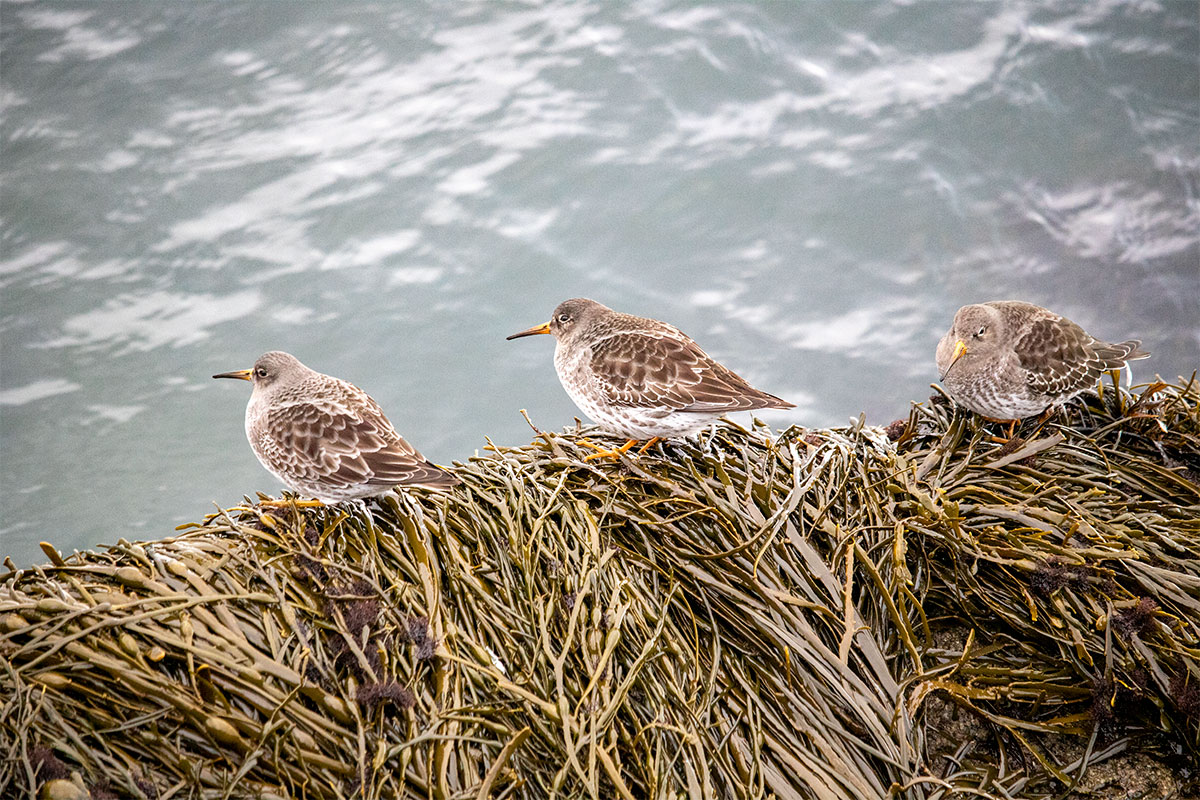
The winter season is an excellent time for observing the purple sandpiper here in Maine. Well on the coast that is. I had the opportunity to visit the area around mid-December of last year. To be exact, I visited the Rockland Harbor Breakwater Lighthouse. The Rockland Breakwater is open to the public every day. You can visit the lighthouse by walking across the mammoth-size granite blocks that make up the 7/8-mile-long breakwater. The city of Rockland is located on the west side of Penobscot Bay in the Mid Coast region of Maine. Since I reside in the western part of the state, I don’t often get to observe shorebirds. Walking along the breakwater, I saw an array of shorebirds. To be expected, there were a couple of species of gulls occupying the area. I’m sure there were more gulls than usual because a lobster boat was out and about checking their traps that were located along the breakwater.

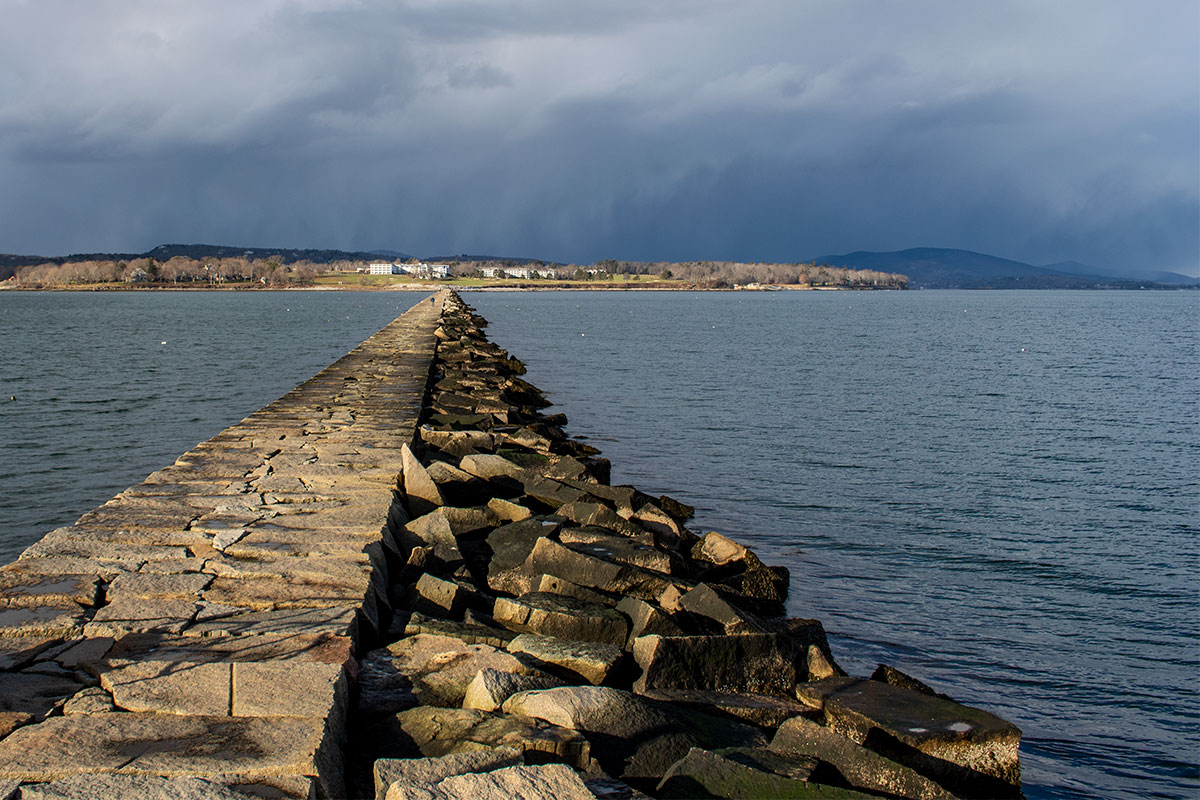
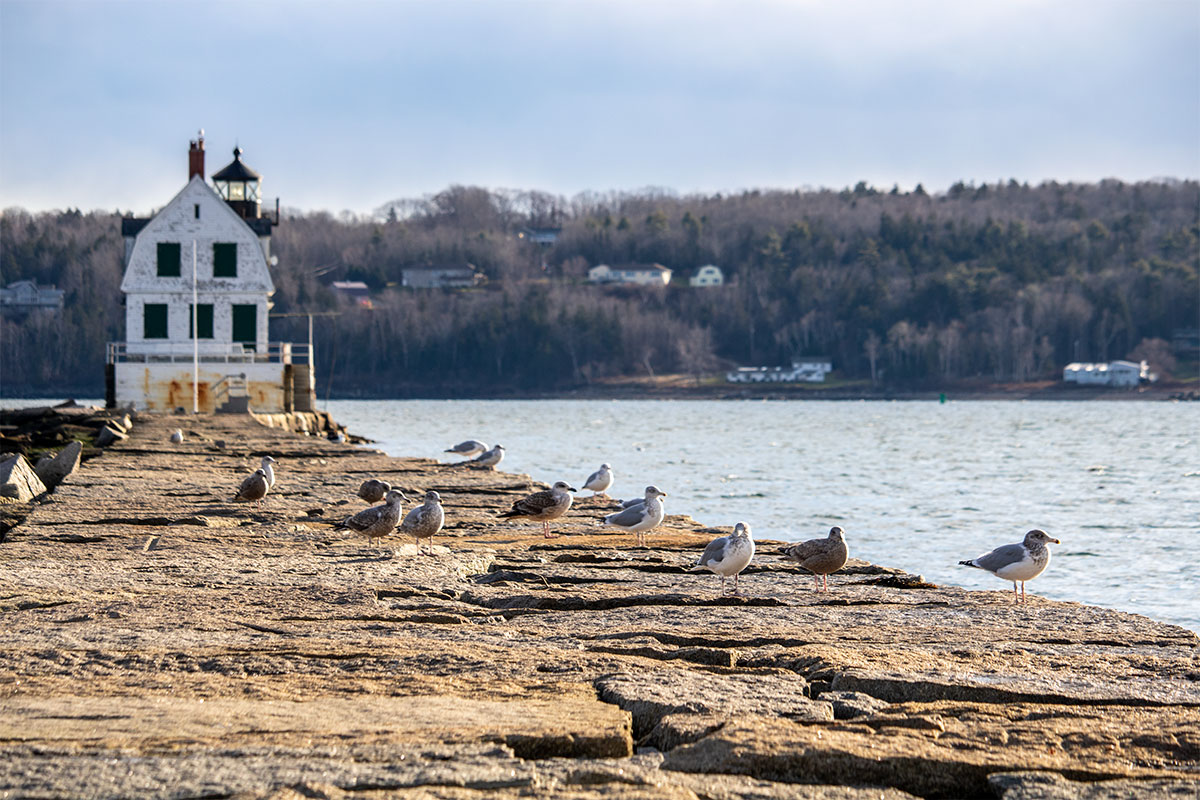
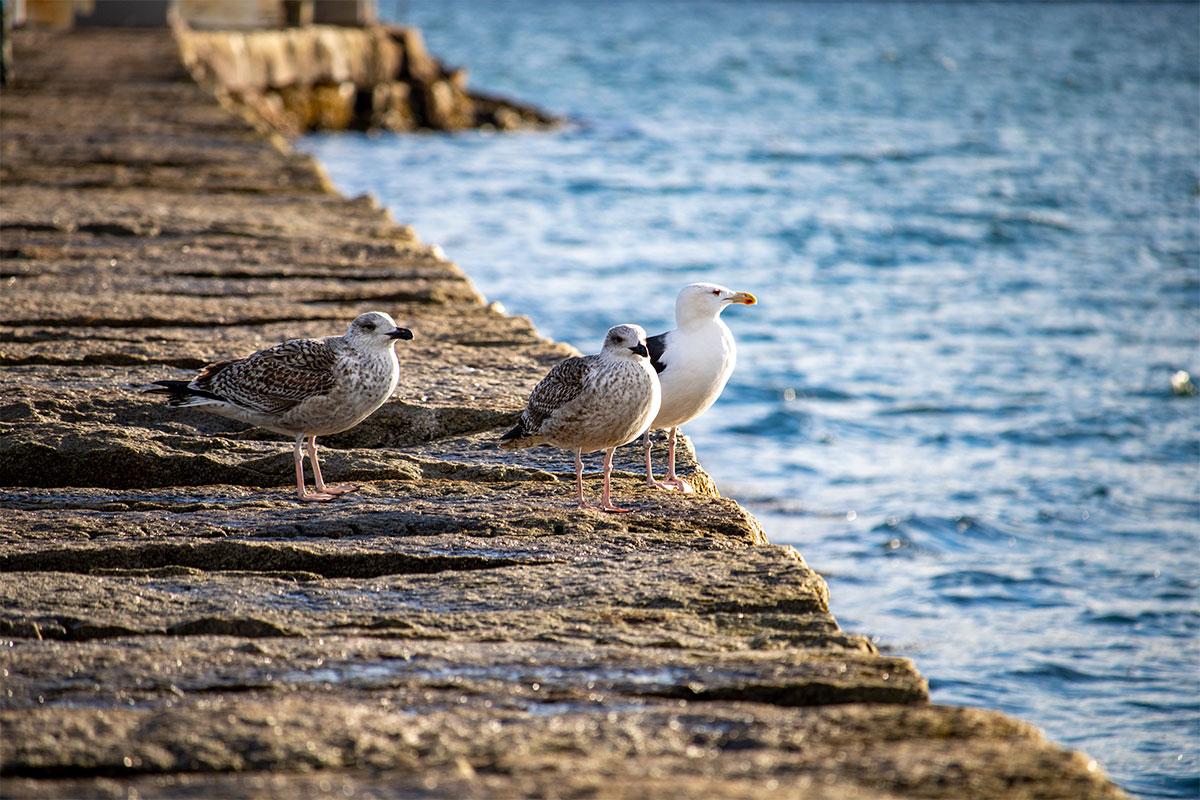
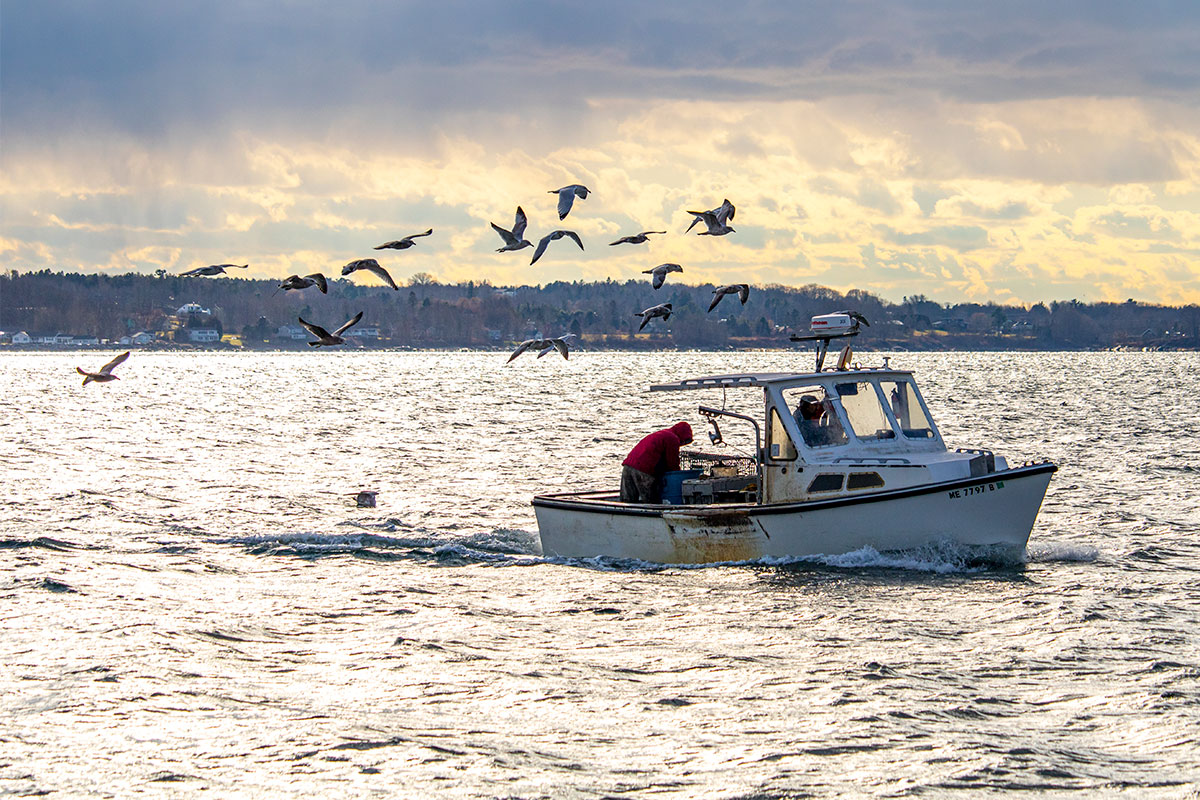
To my surprise, there was also an abundance of purple sandpipers that could be found along the seaweed-covered rocks of the area. The purple sandpiper Calidris maritima is a small shorebird in the sandpiper family Scolopacidae. This hardy sandpiper breeds in the arctic and subarctic regions of Eurasia and North America and winters further south on the Atlantic coast. Like other snowbirds, purple sandpipers migrate to Maine to escape the cold winters of their breeding grounds.
The sandpipers didn’t seem to mind me being there and I used the chance to take several photographs. I want to share a few interesting facts about these birds and photographs from my coastal adventure.
What Are Some Interesting Facts About the Purple Sandpiper?
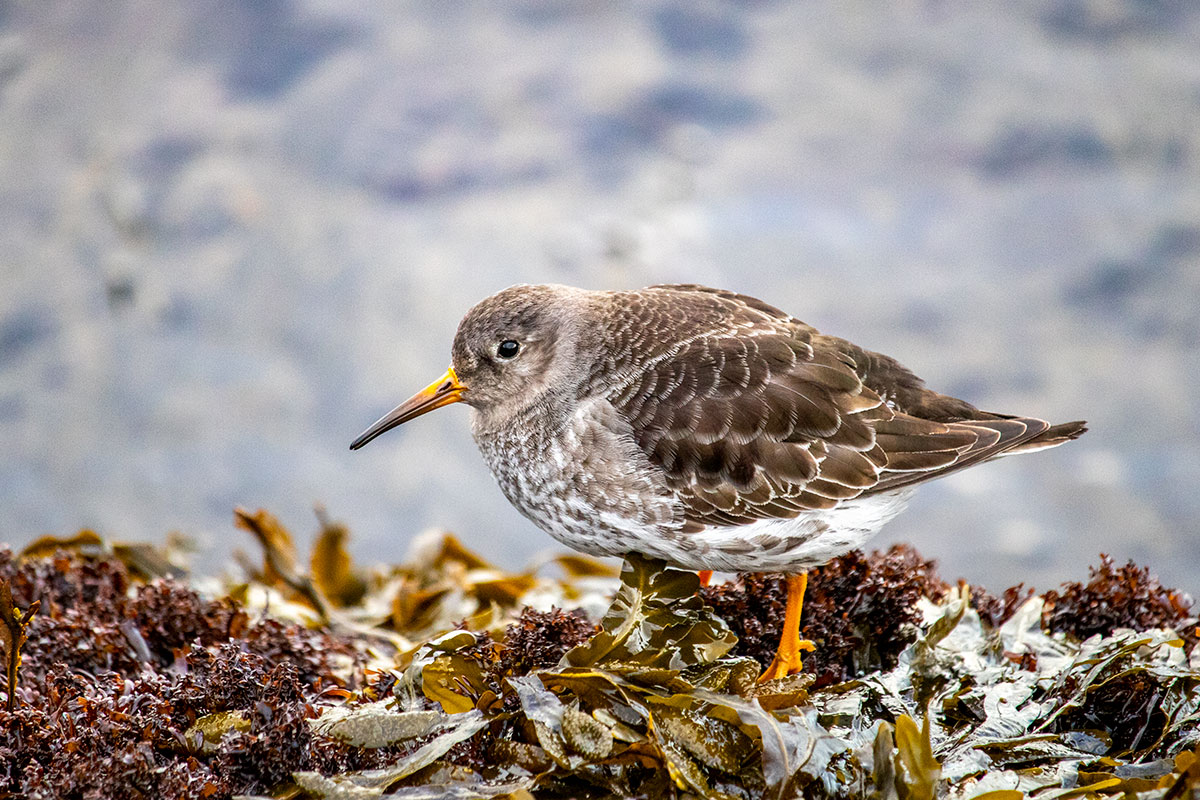
Sandpiper Symbolism
Sandpipers are captivating shorebirds that symbolize adaptability, mindfulness, and navigating life’s ebbs and flows. The presence of these birds offers lessons in balance, embracing change, and finding tranquility in both solitude and social connections.
How Do You Identify a Purple Sandpiper?
Purple sandpipers are robin-sized plump, small shorebirds with a long, slightly drooping bill, and fairly long legs for their size.
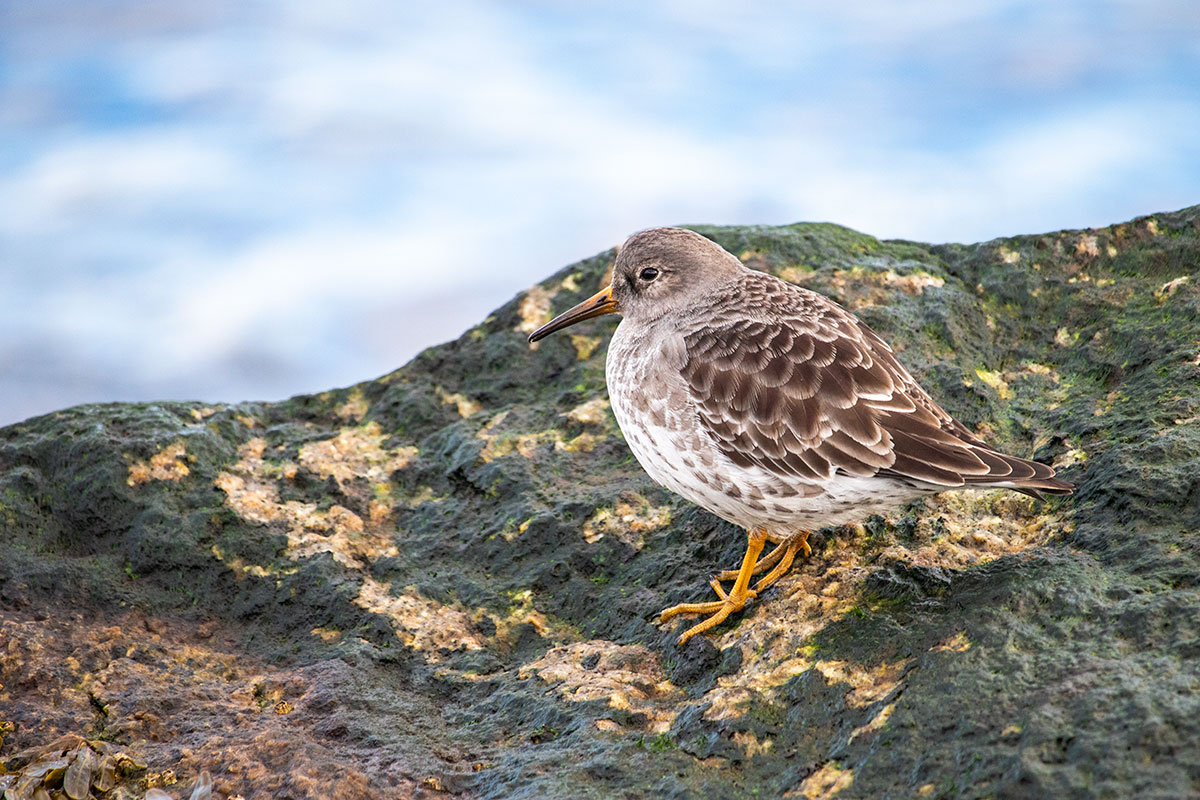
Breeding adults are mostly gray above and whitish below, with extensive dark speckling on the breast and flanks. Some of the back and shoulder feathers are edged in a reddish-brown color. The legs are yellowish to orange in color. The base of the bill is orange and is rather long. Non-breeding adults are rich slaty gray overall, with a difficult-to-see violet or purple sheen to some wing feathers (tertials, coverts). Juveniles will have pale edges to the feathers of the upperparts, lending to a scaly appearance.
Habitat
Purple sandpipers nest in the tundra of the high Arctic and forage in the tundra and nearby rocky tidal areas. They spend winters on the rocky shores of the oceans of northern North America and Europe. Sometimes, also forages along shorelines in debris and seaweed washed up on shore, especially during migration.
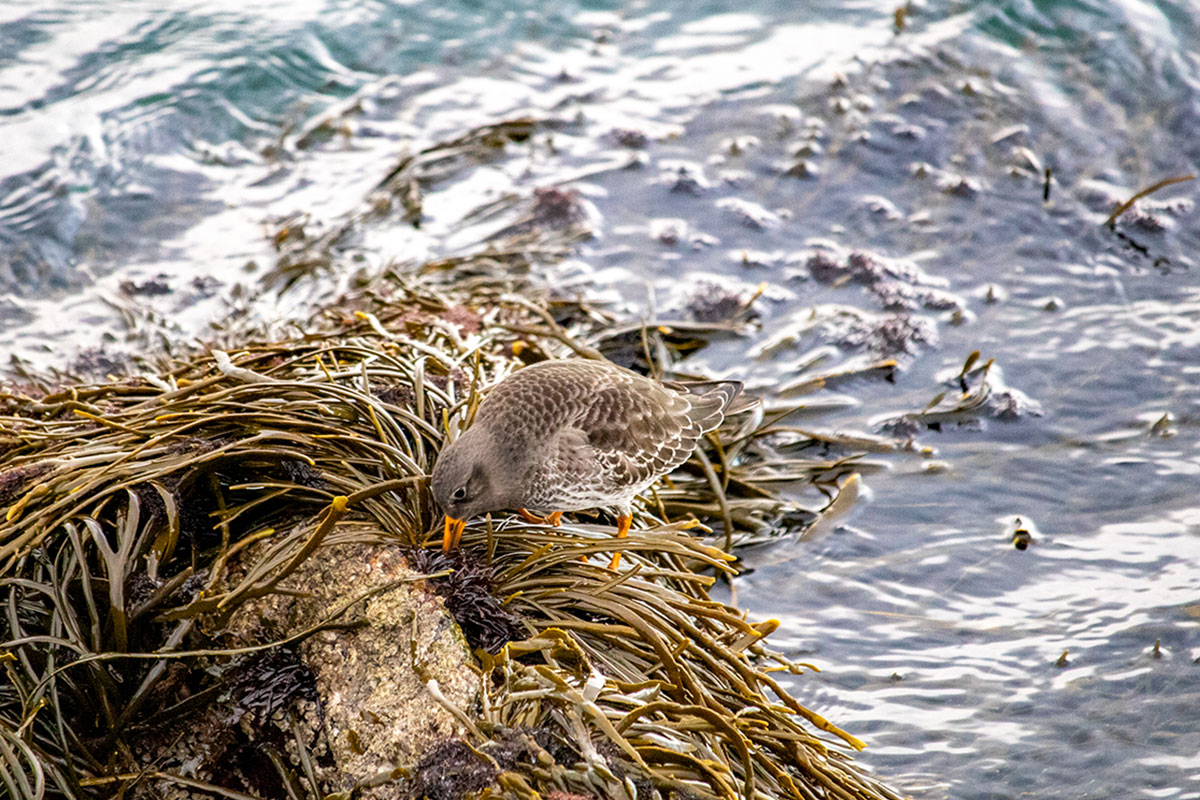
Behavior
Forages mostly on rocky ocean coasts, where it will feed on invertebrates pulled from rocks and seaweed, or along shorelines among heaps of algae or seaweed.
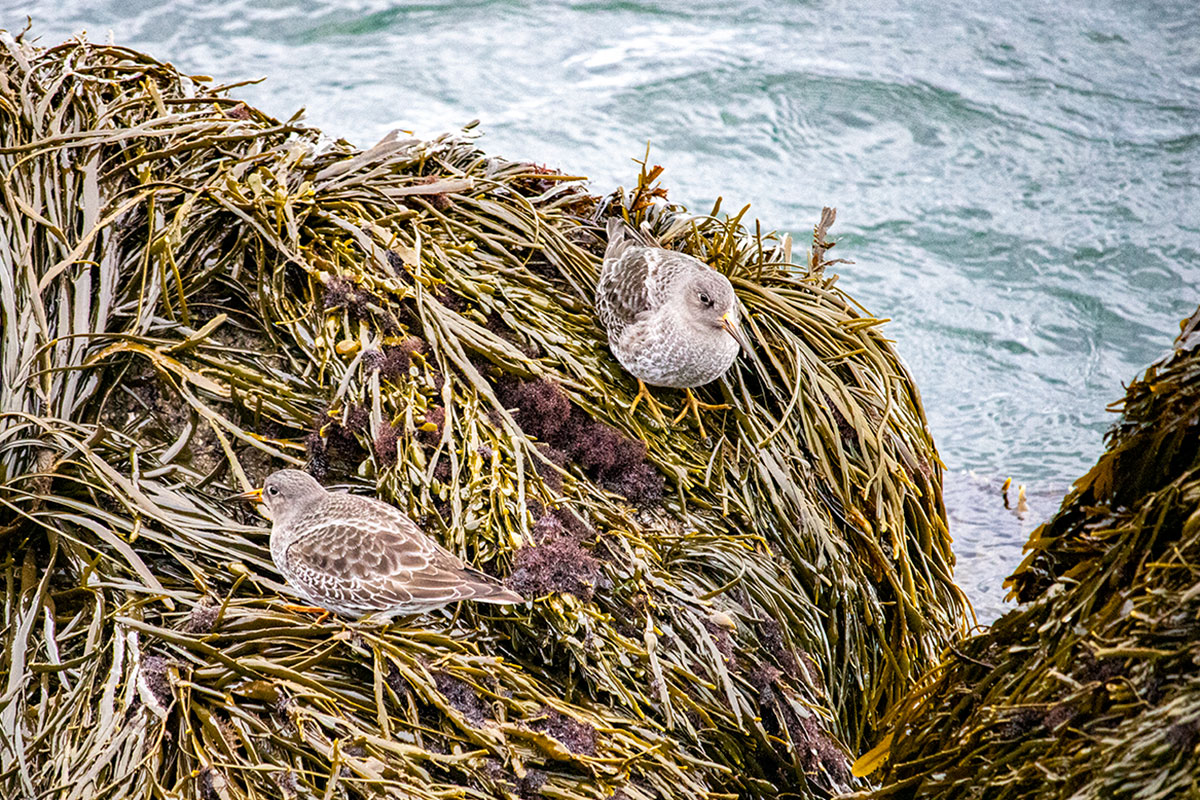
Diet
Purple Sandpipers eat mostly invertebrates and their diet varies between the breeding and non-breeding seasons. They spend most of the year along rocky shorelines, consuming creatures such as mussels, periwinkles, sea snails, worms, small crabs, and other crustaceans. They stand or walk slowly on rocks, searching for prey visually or simply inserting their bills into algae or wrack to detect prey by touch or taste. They often probe between barnacles or mussels for small prey items, but they also eat small mussels whole, grinding the shells in the gizzard. Purple sandpipers sometimes flip over seaweed or wrack to search for prey. They forage more on falling and lower tides than at high tide, and they often forage at night, even in the middle of winter. Many of their prey species live among marine algae, and they consume a fair amount of this algae as well. When foraging along shorelines in wrack, they eat larval and adult kelp flies and other flies. On breeding grounds, at least when they forage in marine environments, their diet is similar to the nonbreeding season. On the tundra, especially in the highlands, they consume spiders, worms, aphids, beetles, springtails, and flies of many different families. Their foraging in the tundra is mostly by picking and probing with the bill into lichen, soil, and sometimes into snow and ice. Unlike most sandpipers, they also eat some plant material, including berries, buds, seeds, leaves, and moss.
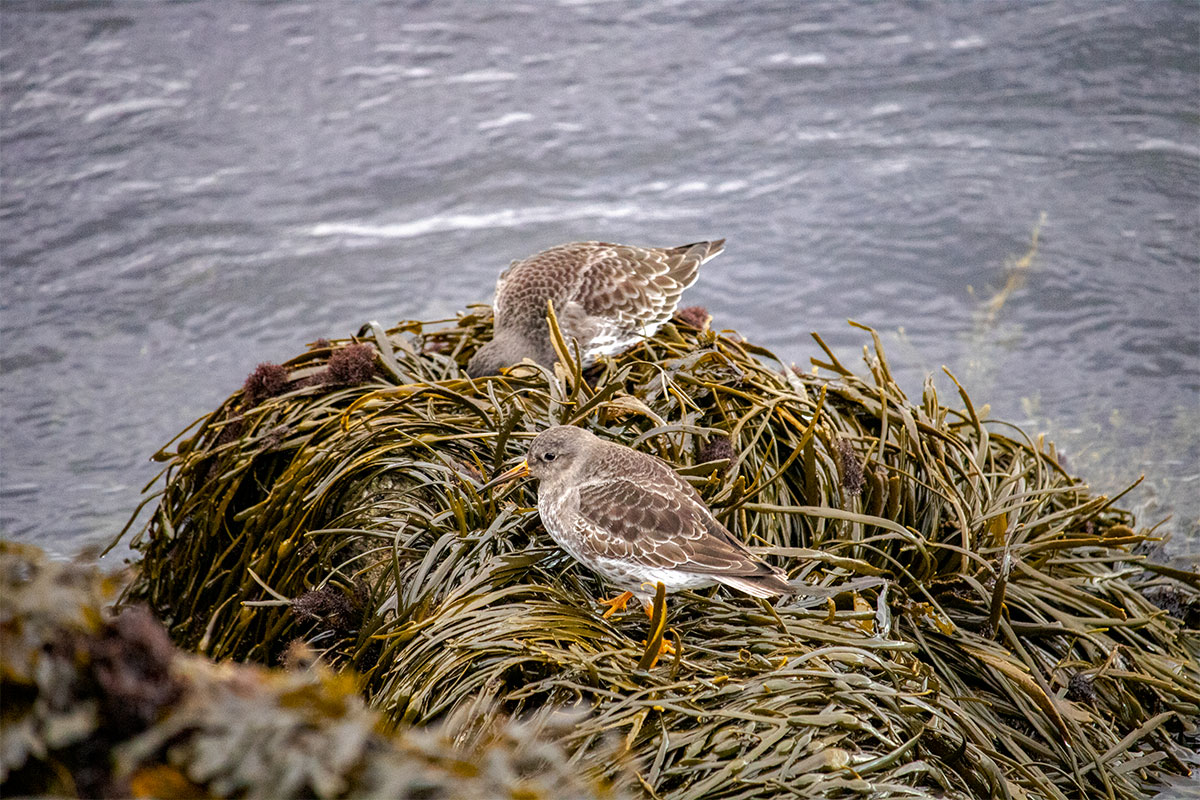
Songs & Calls
Males in display flight over the territory deliver a rollicking, chortling song of repeated phrases.
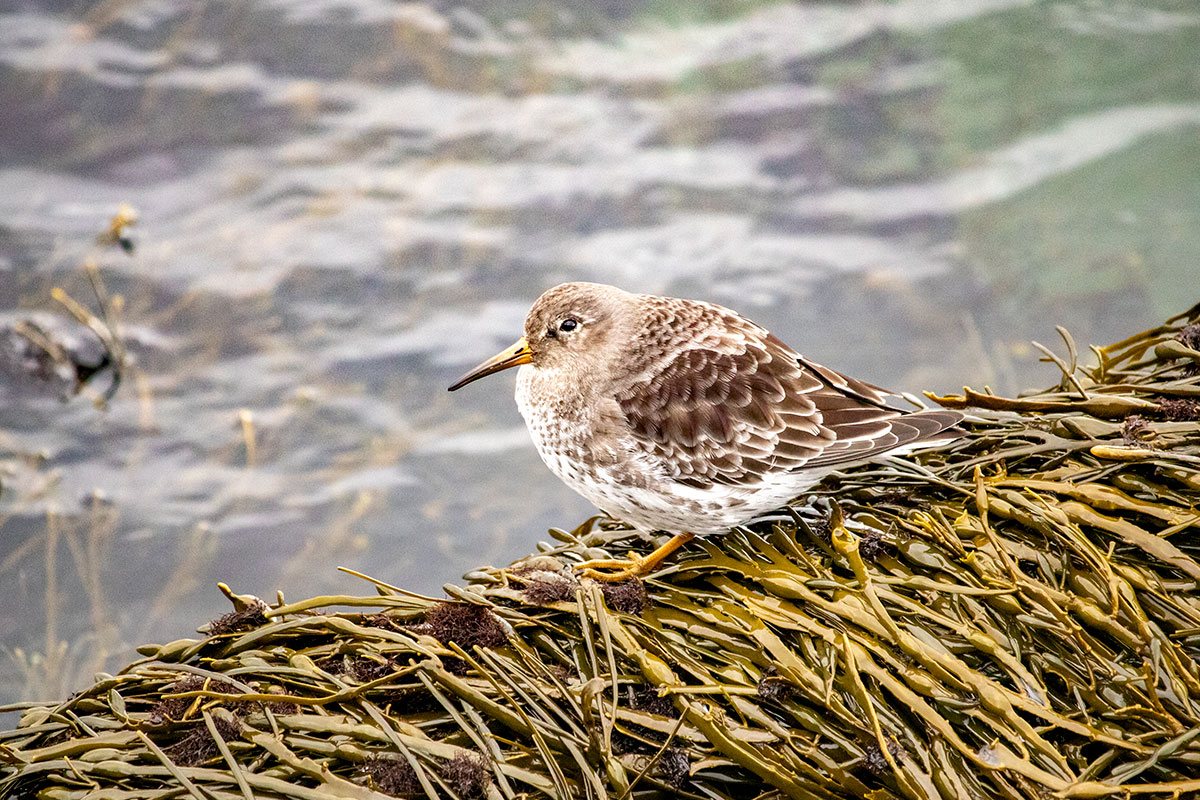
Purple sandpipers that interact often give squeaky, coarse kee or keer calls as well as chuckling. The flight call is a low kip. Nesting birds give many other vocalizations as well.
Breeding & Nesting
Males and females generally mate for life. The male makes several scrapes in the tundra and shows them to the female. She will then select the final site, a ground site in tundra with sufficient brushy cover to conceal the nest. Nests are set into a scrape or depression, roughly cup-shaped, lined with feathers, sedges, and leaves of willow, mountain avens, or arctic bell heather. The average size of nests is about 3.7 inches across and 1.3 inches tall, with the interior cup one inch deep. There are three to four eggs that are beige to olive in color, with variable spotting. Both male and female purple sandpipers share incubation duties. Hatchlings are completely covered with dense white down and are capable of walking and pecking at the ground within a few hours of hatching.
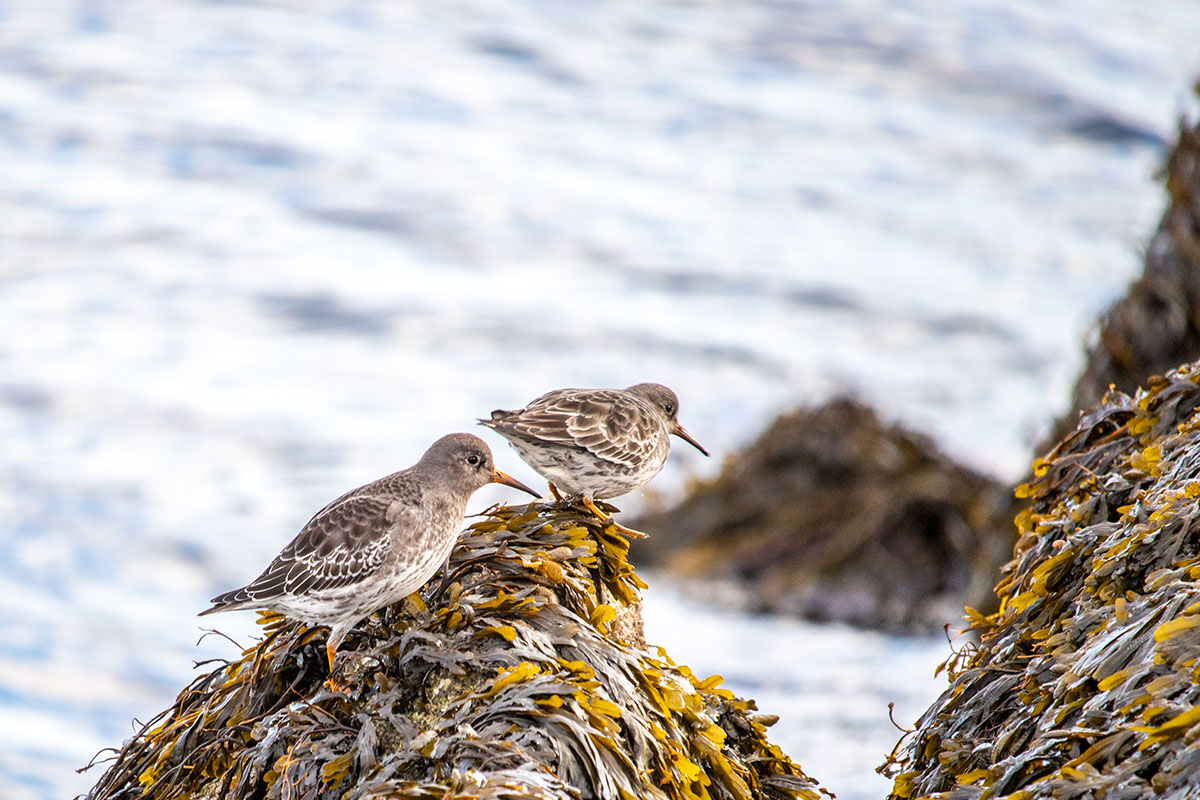
Migration
Purple sandpipers are medium-distance migrants. Wintering grounds for these birds are farther north than any other shorebird.
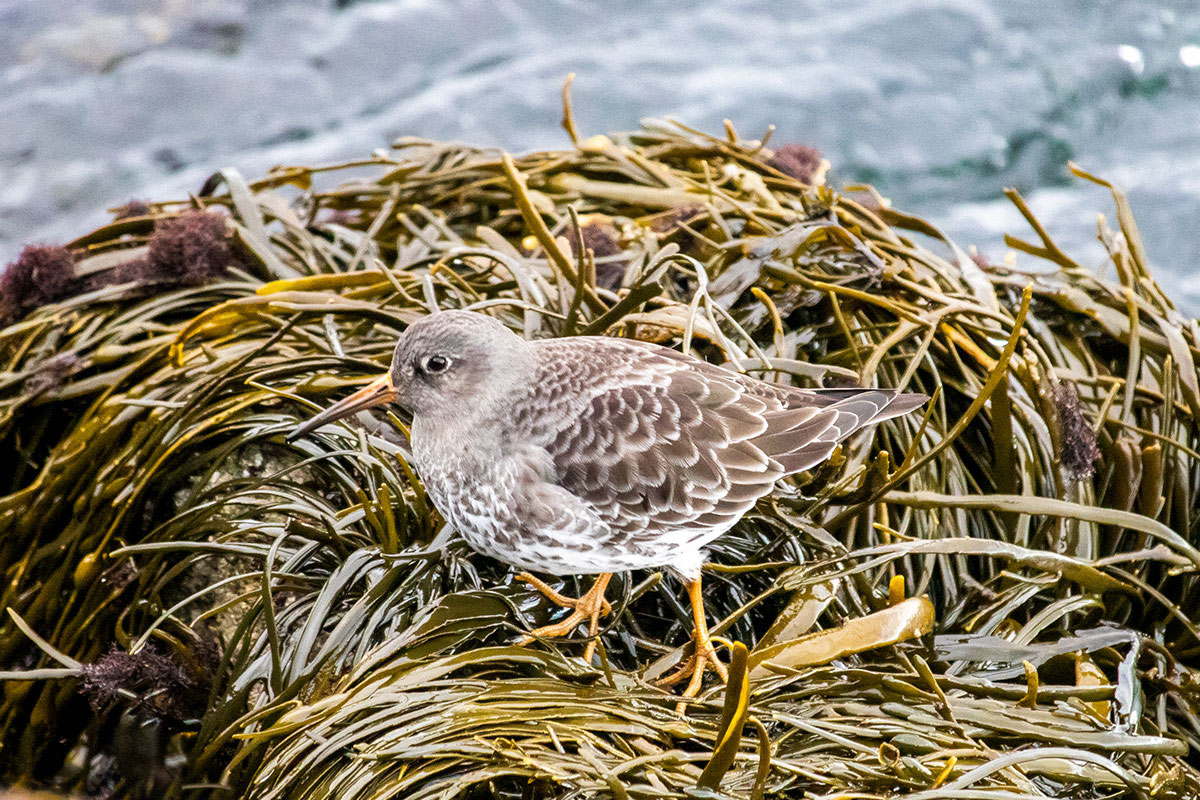
Are Purple Sandpipers Endangered?
The purple sandpiper has an extremely large range and although the population appears to be decreasing, the population is very large. The International Union for Conservation of Nature (IUCN) has judged that the threat to the status of the species is of “least concern.”
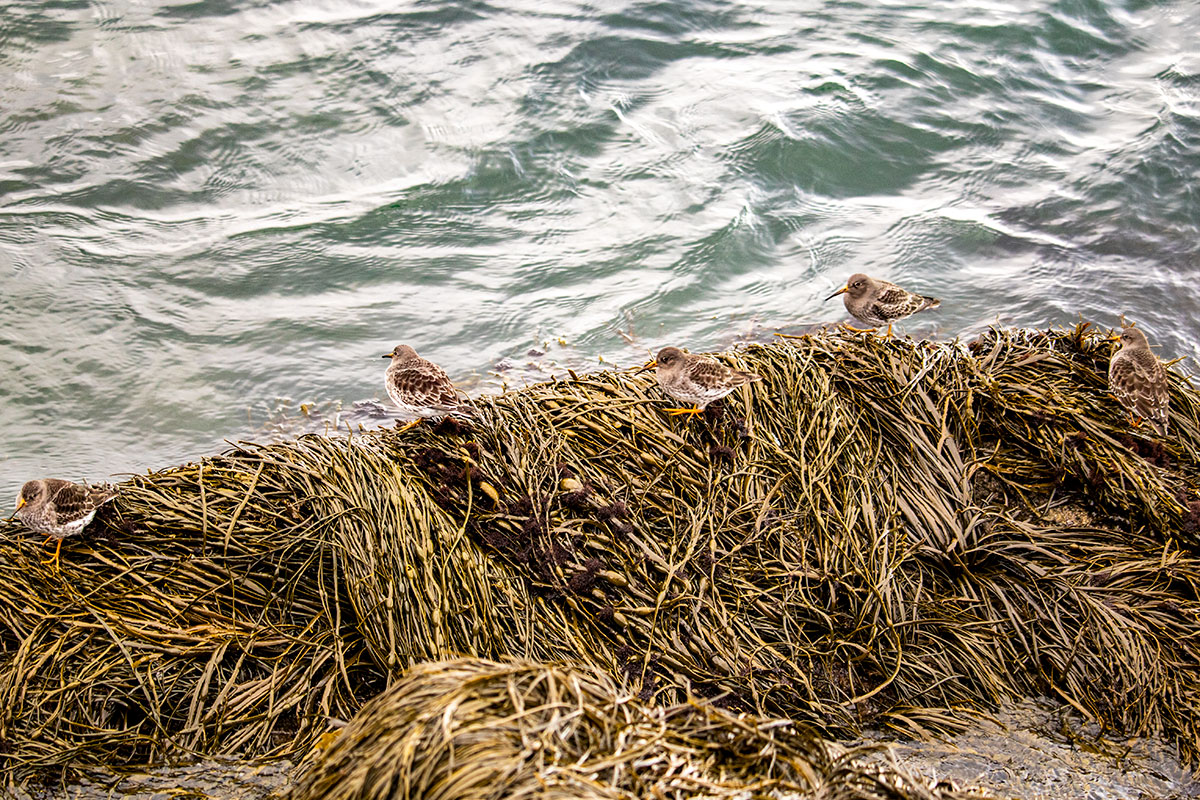
Thank you for reading and I hope you enjoyed learning about one of Maine’s most interestingly unique snowbirds. I can’t wait to get back down to the coast soon and get the chance to observe the purple sandpiper again as well as other shorebirds here in the great state of Maine.
Resources used for this post:
allaboutbirds.org & audubon.org
Very good pictures. I honestly don’t know how you do it.
Thank you Jay.